
J.R.R. Tolkien, the professor of languages more famous for being the author of The Hobbit and The Lord of Rings, was fascinated by the idea of dragons from an early age.
When he was about seven he began to compose his own story about a dragon. ‘I remember almost nothing about it except a philological [language study] fact,’ he recalled. ‘My mother said nothing about the dragon, but pointed out that one could not say “a green great dragon”, but had to say “a great green dragon”. I wondered why, and still do.
Humphrey Carpenter: J.R.R. Tolkien: A Biography, Unwin Paperbacks, London, 1978, pp. 30–1
What Mabel Tolkien was teaching her son was that English grammar has strict rules about the order in which adjectives are listed. The astonishing thing is that this order is one of the great untaught rules of English. Classic reference works, such as Fowler’s Modern English Usage, do not mention these rules. It is one of the wonders of the human brain: the region of the brain that picks up and memorises language patterns simply works out what this order is.
There is no simple rule to tell us what order adjectives should be in. Things become more complicated because modern grammar, developed within the last century, has a new part of speech – determiners – that includes many words that traditional grammar, developed over the last 500 years or so, classed as adjectives! (I’ll write more about determiners in a future blog.) I’ll use the traditional grammar approach here because I prefer it.
Some reference books and online sources do refer to different types of adjectives:
- demonstrative adjectives: the words this, that, these and those when they are used before a noun; the same words can also be used as pronouns
- distributive adjectives: each, every, either and neither (again, these words can also be pronouns)
- interrogative adjectives: which, what and whose (and these words can also function as pronouns)
- possessive adjectives: my, our, your, his, her, its, their (its can also function as a pronoun; depending on the reference work you read, the other possessive adjectives may or may not be classed as pronouns)
- quantitative adjectives: numbers, fractions and words that describe how much of the noun is being written about: for example, much, little, some, enough, any (and yes, some of these words can be used as pronouns). No and none are quantitative adjectives.
- descriptive adjectives: all other adjectives.
(Modern grammar classifies demonstrative, distributive, interrogative, possessive and quantitative adjectives as determiners.)
Using these categories, we can say that the order of adjectives in English is to have the demonstrative, distributive, interrogative or possessive adjective first. The interesting thing about these adjectives is that, if you use one of these categories, you cannot use one of the other three in the same list to describe the same noun). Quantitative adjectives come next, and the descriptive adjectives follow the quantitative adjectives: this is why we write great [quantitative] green [descriptive] dragon.
But there is a problem with these categories because the last category (descriptive adjectives) is simply too large. What are the rules when we have two or more descriptive adjectives: a great metal green dragon or a great green metal dragon? Three storage white cotton bags or three cotton storage white bags or three white cotton storage bags?
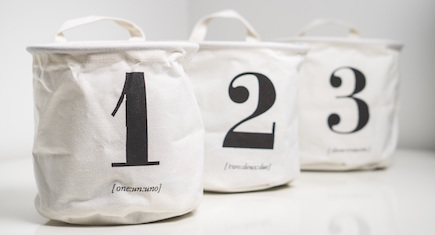
Mark Forsyth became an internet sensation in 2016 when the BBC retweeted his observations on the order of adjectives from his book The Elements of Eloquence: How To Turn the Perfect Phrase:
opinion–age–shape–colour–origin–material–purpose
Forsyth, The Elements of Eloquence: How To Turn the Perfect Phrase, Icon Books, London, 2013.
While this is helpful, this order is not completely rigid. For example, I often prefer to have age adjectives before opinion:
- my three new useful round white American storage bags rather than
my three useful new round white American storage bags - those five young exhausted athletic blonde and brunette European female long-distance runners rather than
those five exhausted young athletic blonde and brunette European female long-distance runners - your two old friendly fat solid-coloured mixed-breed companion ponies rather than
your two friendly old fat solid-coloured mixed-breed companion ponies.
In each of these examples, both orders – age before opinion and opinion before age – are fine to use; which one is more a matter of personal preference rather than being right or wrong.
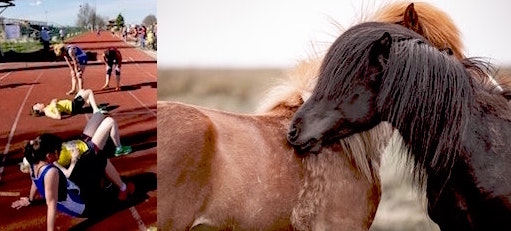
It also worth noting that purpose adjectives may need to come before material:
- my mother’s two beautiful modern cylindrical multi-coloured decorative ceramic vases
rather than my mother’s two beautiful modern cylindrical multi-coloured ceramic decorative vases.
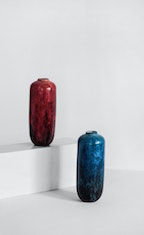
You’ll also notice that Forsyth’s categories of descriptive adjectives need to be interpreted broadly. For instance, we often use male and female as adjectives. There is no obvious category for them but they work best as material. Similarly, in the pony example above, mixed-breed is not a geographical origin but does fit within a broader concept of ‘origin’.
If you learnt English as a child by picking up it at home before you could speak, you need not worry overly much; you brain will put adjectives in the correct order without your having to think about it. If you are learning or have learned English as a foreign language, you will probably find these inexact rules on the order of adjectives frustrating. The easiest way around the problem is to avoid using more than two or three descriptive adjectives!
Proper adjectives
Proper adjectives is a name sometimes given to proper nouns used as adjectives: for example, French bread, Shetland ponies, Australian cattle dog. (Many references do not list proper adjectives as a distinct category but include them as descriptive adjectives.) Sometimes the adjective is the same as the proper noun (Shetland); sometimes is has been altered slightly (French, Australian). The main thing to know about these adjectives that usually correspond to a geographical location is that, like proper nouns, they have a capital letter. There are some that have been in English so long that they have lost their geographical association and their capital letter: venetian blinds. If you are unsure whether the adjective should be capitalised or not, the best thing to do is check in a dictionary.
Other categories of adjectives
You can find other classifications of adjectives if you start researching this topic. One common traditional set of categories is evaluative, descriptive and definitive adjectives. I’ve never found these categories helpful as there is no clear distinction between what is an evaluative and what is a descriptive adjective. For example, big seems to be a descriptive adjective, but one person’s big slice of cake might be another person’s small piece of cake, thus making big and small evaluative rather than descriptive. Mark Forsyth’s more specific categories are more helpful.
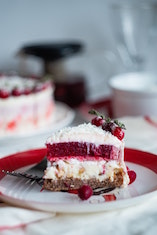
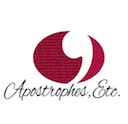
If you have found this post interesting, you can find a full index to my other posts on the index page. To be notified when I post a new topic, follow me on Facebook! If you have any particular questions you’d like me to answer in future posts, just send me a message. I’m always interested to learn what people think, and how you came across this site, so please post a comment.
If you think you would be interested in either my complete grammar course or an individual customised online course (particularly suited for people who don’t live in Melbourne), just click your preferred option.
Photos: dragon sculpture on Dragon Bridge, Ljubljana, Slovenia, © Elena Svetleyshaya | Dreamstime.com; numbered bags by TeroVesalainen from Pixabay; athletes by Massimo Sartirana, ponies by Thibault Carron, vases by Oriento and cake by Dilyara Garifullina, all on Unsplash.